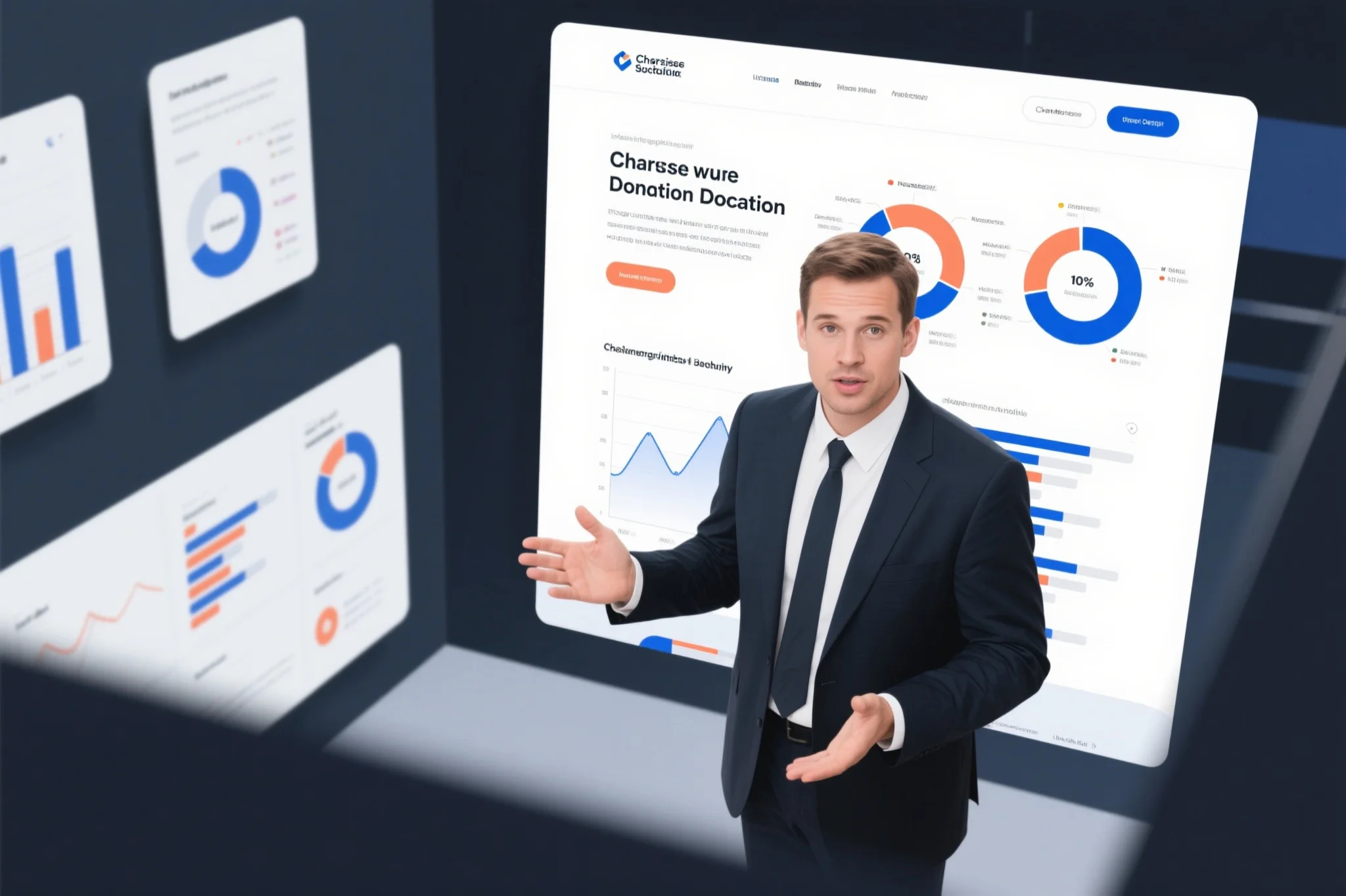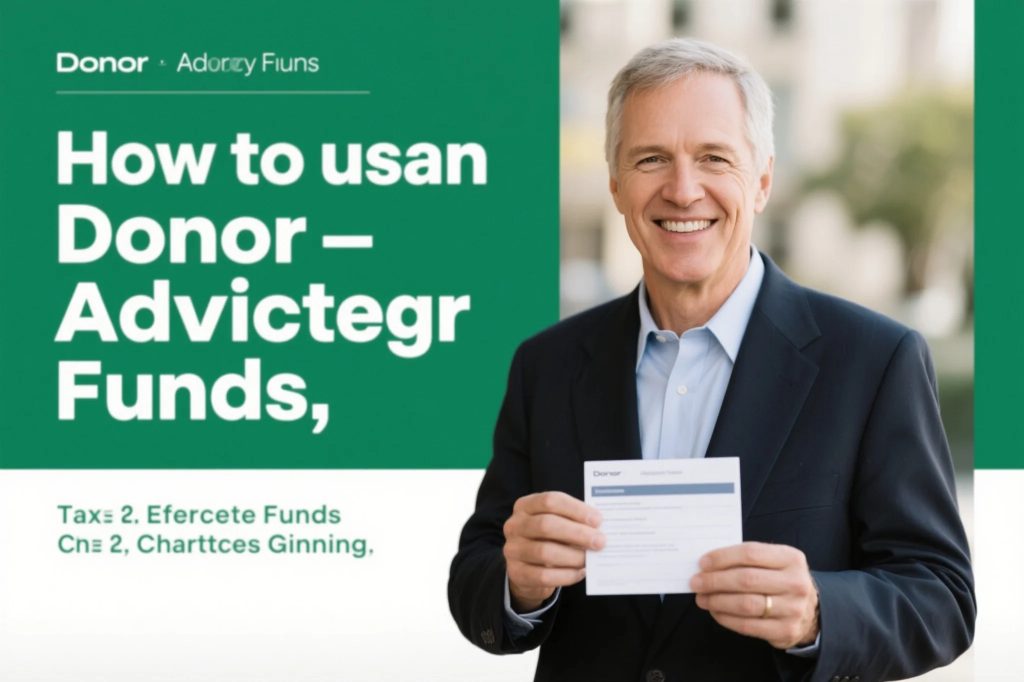
the strategic power of donor-advised funds
Sophisticated philanthropists have increasingly turned to donor-advised funds as versatile vehicles for optimizing their charitable contribution strategies. These financial accounts, often described as “charitable checkbooks,” allow donors to make irrevocable contributions to a sponsoring organization while retaining advisory privileges over how funds get distributed to qualified charities. What makes them particularly attractive for HNW strategy is their unique ability to separate the timing of the tax deduction from the actual distribution to charities – a feature that enables precise tax planning across multiple years. The most successful users treat their DAFs not just as giving tools but as integral components of their overall wealth management framework.
The mechanics are elegantly simple yet powerful: when you contribute cash, securities, or other assets to a donor-advised fund, you receive an immediate tax deduction for the full fair market value of the assets (subject to AGI limitations), while the funds can remain invested and grow tax-free until you recommend grants to your chosen charities. This creates a “charitable float” period where assets can appreciate outside your taxable estate while still being available for future philanthropy. For high-income years when you might be in the 37% federal bracket, this timing arbitrage can generate substantial tax savings compared to giving directly to charities in lower-income years.
maximizing deductions through asset selection
The true power of donor-advised funds emerges when donors move beyond cash contributions and leverage appreciated securities for their charitable contributions. By donating long-term appreciated stocks, mutual funds, or even cryptocurrency directly to a DAF, donors avoid paying capital gains taxes on the appreciation while still receiving a tax deduction for the full market value. This double benefit – bypassing capital gains and reducing ordinary income – can enhance the value of your philanthropy by 20-30% or more compared to selling assets and donating cash. It’s a cornerstone technique in advanced HNW strategy, particularly for those with concentrated stock positions or highly appreciated investment portfolios.
More sophisticated donors have expanded this approach to include complex assets like private company stock, real estate, and even artwork, though these require specialized DAF sponsors capable of handling such contributions. The key is ensuring the assets meet the long-term capital gains holding period and that you obtain qualified appraisals when necessary. Some donors employ “bunching” strategies where they contribute several years’ worth of charitable assets in a single high-income year to surpass the standard deduction threshold, then distribute the funds to charities over subsequent years. This approach can be particularly powerful when coordinated with other tax planning moves like Roth conversions or business sales.
integrating DAFs with estate planning strategies
For high-net-worth families, donor-advised funds offer unique opportunities to embed philanthropy within broader wealth transfer plans while optimizing tax deductions. Many DAF sponsors allow donors to name successor advisors – typically children or grandchildren – creating a multigenerational giving legacy without the complexity and cost of establishing a private foundation. This makes DAFs particularly attractive as components of HNW strategy, especially for families who want to involve younger generations in charitable decision-making but aren’t ready to commit to a foundation’s administrative requirements.
Some families use DAFs in conjunction with their estate plans by designating the fund as a beneficiary of retirement accounts or life insurance policies. This strategy can be remarkably tax-efficient since retirement assets left to heirs typically incur income taxes, but those designated to a charitable contribution vehicle avoid taxation entirely. More advanced techniques involve pairing DAF contributions with wealth replacement trusts, where the tax savings from the charitable gift fund life insurance policies that ultimately benefit heirs. The flexibility of DAFs allows these strategies to be implemented gradually, making them accessible to families at various stages of wealth accumulation.
timing strategies for optimal tax impact
The separation of the tax deduction timing from the actual charitable distributions gives donor-advised funds their unique power in HNW strategy. Savvy donors coordinate contributions with their income fluctuations – making larger contributions in peak earning years when the deduction provides maximum value, then distributing grants during lower-income years. This approach is particularly valuable for business owners anticipating a liquidity event, executives receiving large bonus years, or anyone with irregular income patterns. The ability to “front-load” charitable contributions during high-tax years while maintaining flexibility in actual distributions makes DAFs superior to direct giving for many sophisticated donors.
Some donors take this timing strategy further by using DAFs in conjunction with Roth conversions. In years when they convert traditional IRA assets to Roth accounts (creating taxable income), they offset part of that income with simultaneous DAF contributions. Others use DAFs to manage required minimum distributions (RMDs) by making qualified charitable distributions directly from their IRAs to their donor-advised funds once they reach age 70½. These advanced techniques require careful planning but can significantly enhance the tax efficiency of your philanthropy while achieving broader financial objectives.
investment strategies within donor-advised funds
Unlike direct charitable gifts that leave no room for growth, donor-advised funds allow contributed assets to continue growing tax-free until distribution. This creates opportunities for sophisticated investment strategies that can amplify the impact of your charitable contributions. Many DAF sponsors offer a range of investment options from conservative money market funds to growth-oriented equity portfolios. Some even allow donors to recommend specific investments or use model portfolios tailored to their philanthropy timeline. The most tax-savvy donors approach their DAF as a long-term charitable endowment, investing for growth during the accumulation phase before transitioning to income-oriented investments when ready to make regular distributions.
For those implementing HNW strategy at scale, some sponsors offer separately managed accounts within DAFs, allowing for customized investment approaches that might include ESG screening or other specialized criteria. The investment growth within a DAF is never taxable to the donor, making these accounts particularly powerful for assets expected to appreciate significantly. Some donors use this feature strategically by contributing assets they believe have strong growth potential but would otherwise generate taxable dividends or capital gains in their personal portfolios. This approach essentially “outsources” the tax liability on future growth to the charitable sector while locking in current tax deductions.

DAFs versus private foundations
While private foundations remain popular among ultra-high-net-worth families, donor-advised funds offer compelling advantages that make them preferable for many HNW strategy implementations. DAFs have higher deduction limits – up to 60% of AGI for cash and 30% for appreciated securities compared to foundations’ 30% and 20% limits respectively. They also avoid the foundation’s excise taxes, distribution requirements, and public disclosure obligations. For donors focused on maximizing their tax deductions while maintaining flexibility in their philanthropy, DAFs often provide the ideal middle ground between direct giving and establishing a private foundation.
That said, some families use both vehicles in tandem as part of a comprehensive charitable plan. They might use a foundation for more strategic, hands-on grantmaking while employing a DAF for more responsive giving or to handle contributions that exceed the foundation’s deduction limits. Some also use DAFs as “testing grounds” for younger family members to develop their philanthropic skills before involving them in foundation governance. The most sophisticated approaches recognize that these tools can complement rather than compete with each other in an overall charitable contribution strategy.
navigating the AGI limitation maze
The deduction limits for donor-advised funds – generally 60% of adjusted gross income for cash and 30% for appreciated assets – create both challenges and planning opportunities for major donors. Those making substantial charitable contributions often need multi-year strategies to fully utilize their deductions. The five-year carryforward provision for excess contributions helps, but sophisticated donors plan their contributions to avoid reaching the limits unnecessarily. Some alternate between cash and stock contributions across years to optimize within the different AGI percentage limits, while others time large contributions to coincide with unusually high-income years.
For donors implementing HNW strategy at scale, understanding these limitations is crucial when structuring major gifts. Some work with their advisors to model various contribution scenarios, projecting how different gift amounts and types will affect their current-year tax deductions and carryforwards. Others use “tiered giving” approaches where they contribute to both a DAF and directly to charities in the same year to maximize deductions while meeting immediate philanthropy needs. The most effective plans consider not just the current year’s tax situation but anticipate AGI fluctuations over a multi-year horizon.
the future of donor-advised funds
As donor-advised funds continue gaining popularity among sophisticated donors, the landscape is evolving with new features and capabilities. Some sponsors now offer impact investing options within DAFs, allowing donors to align their charitable assets with their values even during the accumulation phase. Others are developing more robust tools for family collaboration and next-generation education in philanthropy. These innovations make DAFs increasingly powerful tools for HNW strategy, capable of addressing not just tax deduction needs but broader family legacy and values-based goals.
Potential regulatory changes loom on the horizon, with some proposals calling for minimum distribution requirements similar to private foundations. Savvy donors are staying informed about these developments while recognizing that the core benefits of DAFs – simplicity, flexibility, and tax efficiency – will likely endure regardless of specific rule changes. The most forward-looking families are structuring their charitable contributions to maintain flexibility, allowing them to adapt their strategies as the philanthropic landscape evolves while continuing to maximize both their tax benefits and their charitable impact.